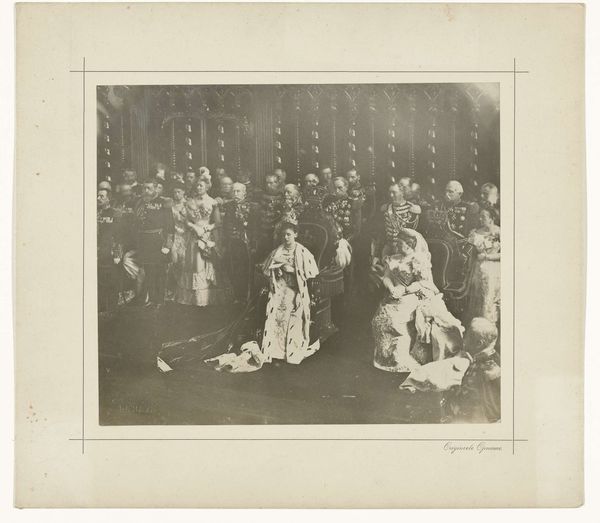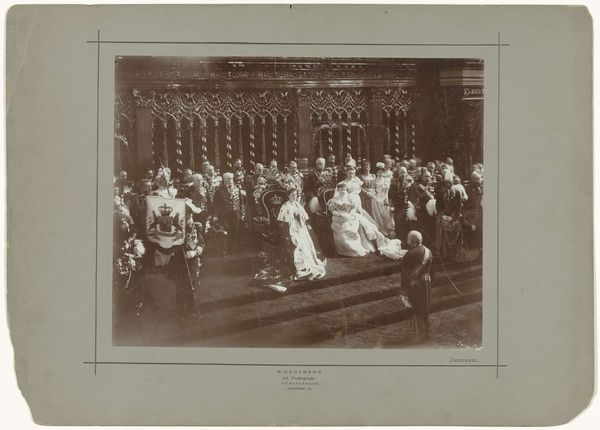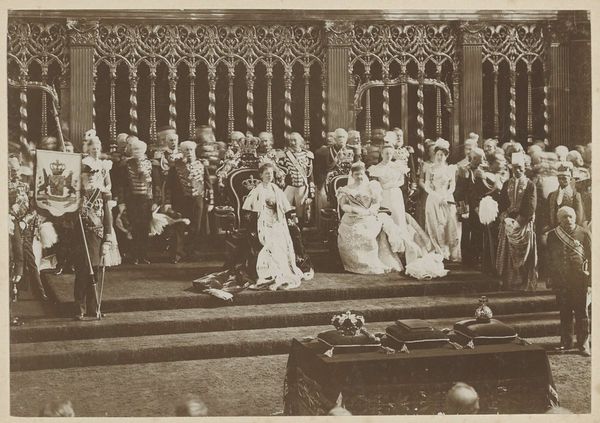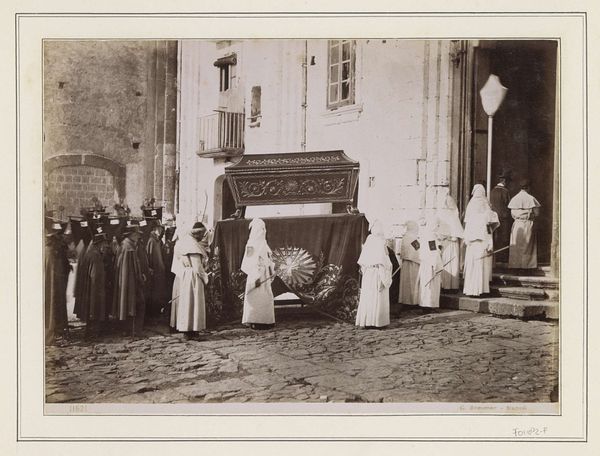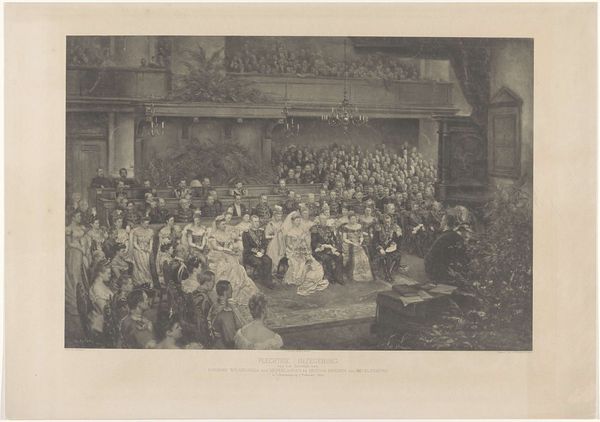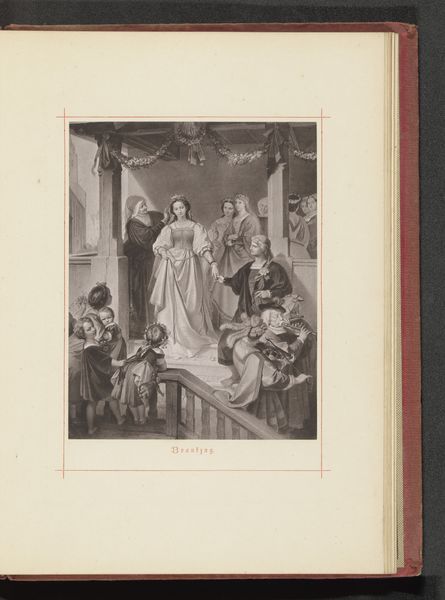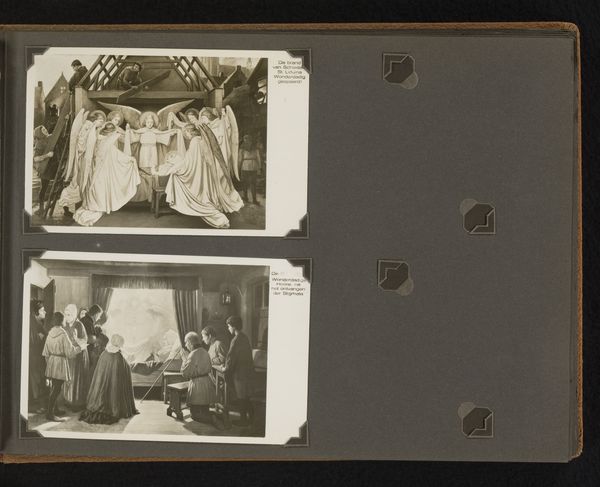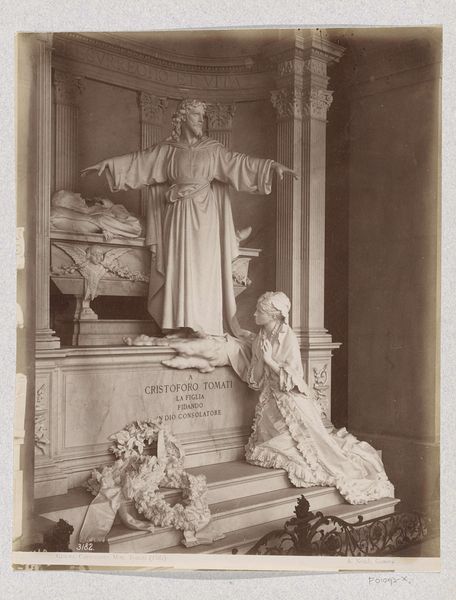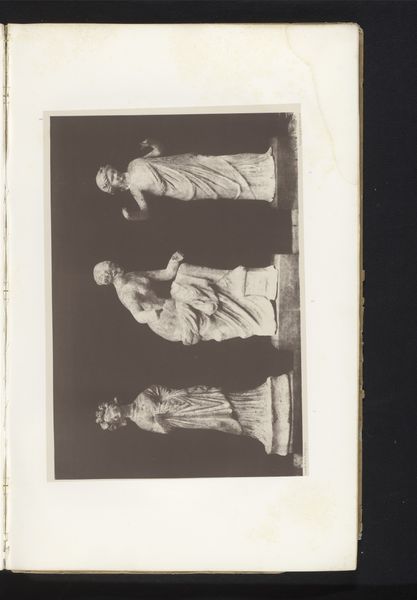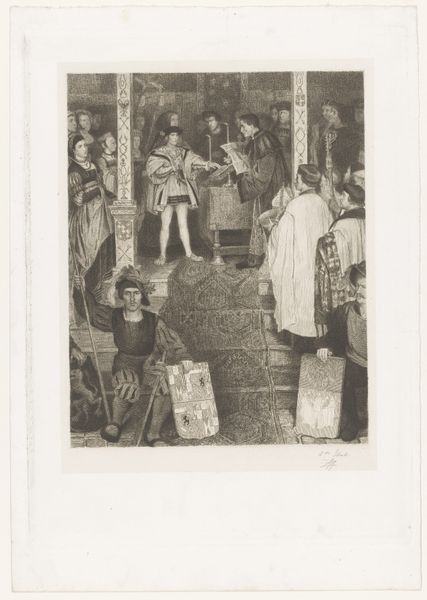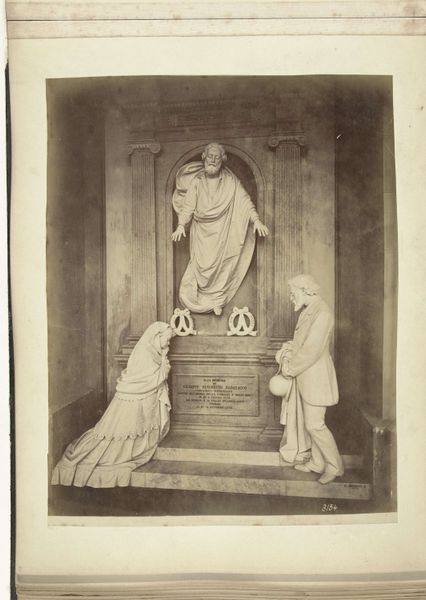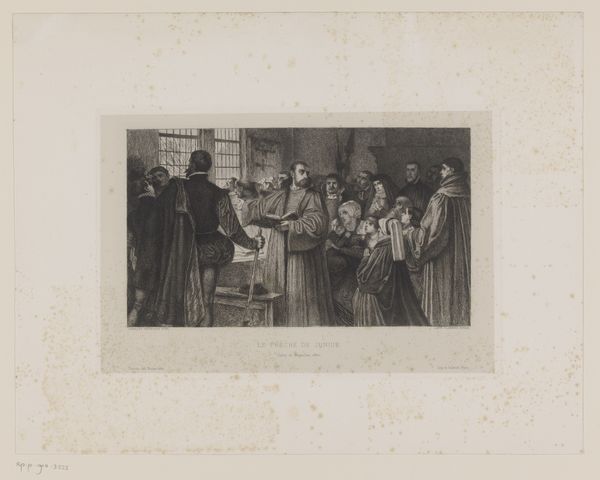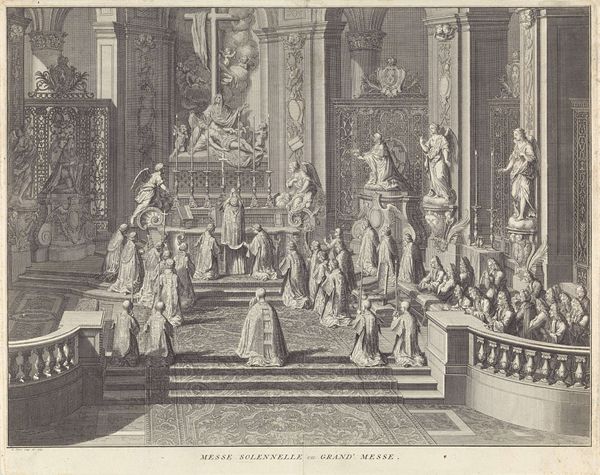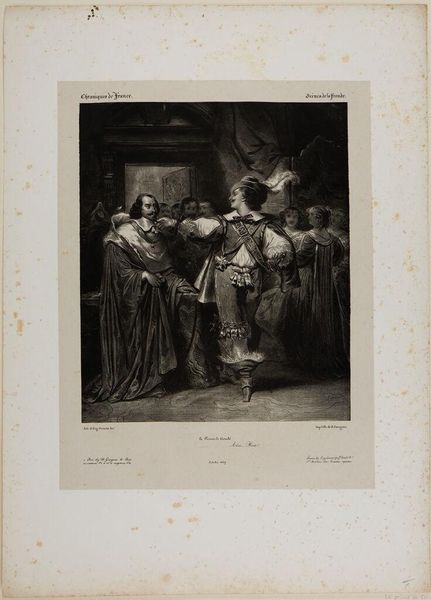
performance, photography, gelatin-silver-print
#
portrait
#
performance
#
photography
#
gelatin-silver-print
#
modernism
Dimensions: height 141 mm, width 235 mm
Copyright: Rijks Museum: Open Domain
Editor: Here we have a gelatin-silver print from around 1929, titled "Leerlingen van Schule Schloss Salem tijdens een dramatische uitvoering," which translates to "Students of Schule Schloss Salem during a dramatic performance". The photographic texture is interesting – what strikes you about the material aspect and context of its creation? Curator: Given its nature as a photograph of a student performance at a school rooted in progressive education, I’m drawn to the means of production here. The choice of gelatin-silver, a process that was relatively accessible at the time, implies an intent to document but also possibly disseminate, creating a visual record of the school’s pedagogy. What was the social function of the work intended to be? Editor: So, it's not just about the final image, but the material reality of how it was produced and its potential use for propaganda for this educational institution? The figures arranged are definitely performing, but how does the materiality of photography influence the performative aspect of this scene? Curator: Precisely. Think about the labor involved – from the photographer to the students acting as performers and set designers – each role contributing to the final representation. Photography democratized art production, making images available to a broader public, moving beyond elitist confines of what ‘art’ should be. Was this gelatin print, with all its social meanings embedded, created and consumed differently to oil on canvas for example? Editor: It does sound like the intention and production are perhaps as, or maybe even more important, than the subject matter, the captured image, and the photo, through its materiality, becomes a powerful message. It helps to see art history through this lens! Curator: Indeed! By understanding the material and social conditions, we gain deeper insights into the motivations and messages encoded within the work, breaking down those boundaries between what constitutes 'art' versus mere 'craft' or 'document'. It is about the means of representation and also how things were produced and used.
Comments
No comments
Be the first to comment and join the conversation on the ultimate creative platform.
